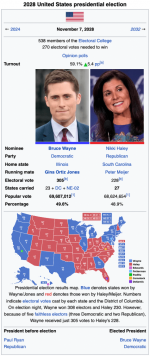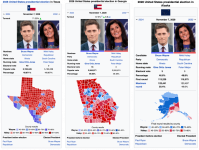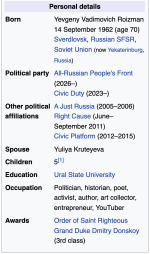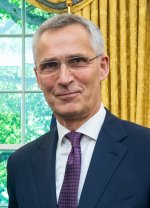Here’s my prologue for it:
Oval Office
Washington, D.C.
January 20th, 2021
As Barack Obama walked into the Oval Office for the last time, he couldn’t help but feel the weight of the past eight years laying heavy upon his shoulders. Yet a sense of finality hovered about, a burgeoning relief that after eight years of blood, sweat, tears, sleepless nights and whatever else the job entailed was to finally become a thing of the past.
He walked around the Oval, eyeing decorations he knew his successor would quickly replace following the inauguration. The picture of the outstretched hand of Lady Liberty resonated with him. The torch acted as a beacon to immigrants far and wide, guiding them to the land of opportunities and possibilities. A land where even the son of Kenyan economist and an American anthropologist can go on to become something greater than they ever could have imagined, from a graduate of Columbia and Harvard to becoming at first a State Senator and then later to a U.S. Senator to eventually the President of the United States of America.
He moved over to stand before the framed painting of Abraham Lincoln. He stared at it for a moment, hands in pockets. A moment of regret flashed over Obama as he stared at Honest Abe’s portrait. Lincoln’s life had been cut short, his goals only partially realized, his ambitions for the country barely underway when he had been killed. For Obama he felt that even with eight years in office, he still had not done nearly enough. He had wanted to accomplish so much when he set out to campaign for president back in February 2011.
So many promises made and so many were never kept, many of which would weigh him down until his dying day, of that he was certain of. The realities of this office and of the cutthroat partisanship on either side of the aisle had made passing legislation excruciating but maybe, he reflected, that was the point. As Kennedy once said ‘We do these things not because they are easy, but because they are hard.’ While JFK had been referring to landing on the Moon, Obama felt the quote resonate within him.
Despite the mistakes and false promises, so much had been accomplished that he could be proud of. As Lincoln had preserved the Union and freed the slaves, Obama took solace in that he and his Administration had done so much good for the country.
Rebuilding America’s economy following the Great Recession had been difficult, requiring tough choices and even tougher compromises, but the robust economic recovery and significant GDP growth since AERA and BBS had been passed vindicated that the correct choices had been made.
Ending the wars in Afghanistan and Iraq had been a solemn oath made first during the primaries and later again during the presidential campaign. It was one he had kept, though it had turned out more difficult to achieve than he had once thought possible as a naive relative greenhorn politician running for the highest office in the land. Getting involved in Syria to end the wholesale slaughter of innocents had been a nearly impossible choice but one he knew he had to make as commander-in-chief, knowing that failure to do so would have haunted him until his dying day. And despite his reservations and that of many Americans, intervention in Syria had returned some semblance of stability and democracy to the region which saved the lives of hundreds of thousands.
But his greatest foreign policy achievement had to have been the apprehension of, trial of, and execution of Osama bin Laden. It was in this room he had ordered the operation to begin and it was in this room he had watched the trial and verdict that allowed the nation to cathartically heal after 9/11 and finally move on.
Furthermore his Administration had done some incredible things on the domestic front, many of which his opponents and supporters once thought impossible. Obama had balanced the budget throughout most of his two terms and in the process had reduced the national debt by over a half-trillion dollars, oversaw the legalization of same-sex marriage at the federal level, decriminalized marijuana, overhauled Social Security, as well as enacting the largest modernization and expansion of the nation’s infrastructure in decades. During his time in office he had tackled reforms concerning immigration, taxation and guns, all with various successes and various failures bundled together. Great gains had been made towards making the United States energy independent, and though it had not fully succeeded in that regard as it was still dependent on foreign oil, the path was set for others to finish.
But the one bill that would go on to define his domestic policy for decades to come would be the National Healthcare Act, forever known by its coined moniker of Obamacare. Providing affordable health insurance to tens of millions of Americans that substantially lowered suicide rates, drug and alcohol addiction, and combating life threatening diseases and ailments was probably the single most proud thing he had accomplished in government. It was flawed, Lord knows it was flawed, but it was something that would long outlive him and see to the betterment of the mental and physical health of countless American citizens.
To the right he was too radical, to the left he wasn’t progressive enough, but in the end he accomplished much of what he set out to do. He had done some things he was not proud of, things he regretted, but overall he was damn proud of all that had been accomplished.
But with success came failure. He winced, recalling the 2020 government shutdown that paralyzed the nation for weeks. While America pulled out of Iraq and Afghanistan, it had become embroiled in Somalia and there seemed to be no end in sight to the conflict there. While the Taliban had been crushed, Al-Qaeda defanged and ISIS all but defeated, other terrorist organizations were on the rise to take their place in the ever-continuing global War on Terror. Groups such as Al-Shabaab and Boko Haram were becoming increasingly dangerous to the U.S. and its allies, with their acts of violence growing in frequency and body count. Relations with Russia had cooled, though relations with China continued to warm. The Middle East was more peaceful than it had been in two decades and NATO had expanded its membership in Europe. Three genocides had been ended by UN intervention spearheaded by the U.S. A tentative peace agreement between Israelis and Palestines had been reached, though whether or not it would work out long-term remained to be seen.
Obama turned and looked out over the Oval Office once more. The mountain of paperwork sitting atop the Resolute Desk, signed pardons and commutations all, were his last acts as president. Beside them was a single sheet of paper, covered in tight, neat script, what many had labeled as ‘lacking pretension and bearing measured logic.’ It was his letter to the president-elect who would be at the White House within the next half-hour, a friendly get-together before the inauguration at the Capitol officially handed over the reins of power. At the bottom were three quotes he felt were poignant and necessary for his successor to read and understand.
‘The test of our progress is not whether we add more to the abundance of those who have much; it is whether we provide enough for those who have too little.’
‘I am not bound to win, but I am bound to be true. I am not bound to succeed, but I am bound to live up to what light I have.’
And finally.
‘E Pluribus Unum.’
Obama gave one of characteristic toothy grins, as he reached down to sign the paper, his signature a marked contrast to his typical handwriting. Pocketing the pen, which he would keep as a memento, he read over the lines of advice littered with jokes, encouragement, and yes even suggestions.
The door to the Oval Office opened and there stood Michelle. Beautiful and radiant as ever.
“Barry, the President-Elect and his wife are here.”
“Thank you. I’ll be right there, Michelle. Just one more thing.”
She gave a patient nod and withdrew, leaving him alone once more. So much time to make up, Obama thought not for the first time, between her and him. Perhaps they should go on vacation. Yes, a nice family vacation. To Hawaii to start, but so many more places to follow. He looked forward to the future, forward for what was to come for himself, for his family and for the nation he so loved.
He took out the pen again and wrote at the very bottom of the page.
P.S. Good Luck.
He returned the pen to his pocket and closed his eyes. Taking a deep breath, he exhaled, feeling eight years of stress, of worry, of high hopes and broken dreams, of bitter defeats and great accomplishments, of fear and of joy pass through him.
Opening his eyes he walked to the door leading to where his ever-patient and caring wife waited with their two daughters who had arrived at the White House as curious girls and now would leave as young women ready to pursue their lives as they saw fit. He looked out over the room one last time and an old thought, a chant he would say at rallies and in speeches on the campaign echoed through his mind and escaped his lips.
“Yes we can.”
He smiled as he opened the door and closed it behind him, marking the end of the Presidency of Barack Obama, 45th President of the United States of America.













